How to create a newspaper with free Canva templates: a step-by-step guide
If you’re looking to create a newspaper using Canva, you’re in the right place. At Newspaper Club, we make it simple to design and print...
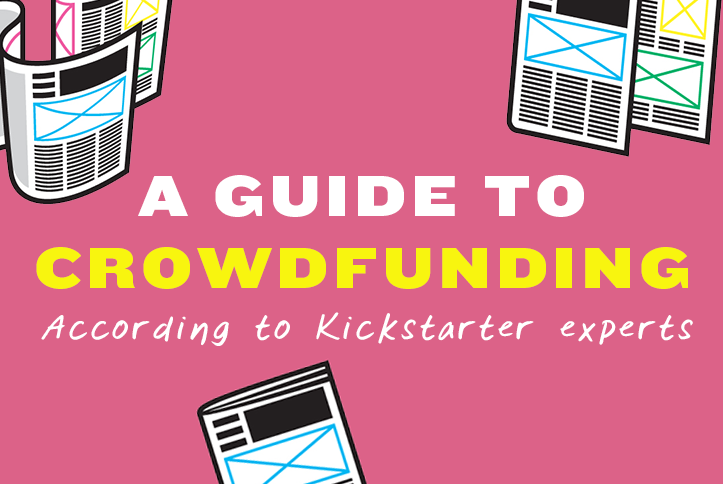
Crowdfunding is one of the most accessible ways to raise money for a project. It’s an opportunity to share your work with a wide audience and gain their feedback and support. But not all campaigns are successful — only around 37% of Kickstarter campaigns reach their goal amount. With the annual number of crowdfunding projects set to double by 2023, it’s worth considering how you can make your project stand out from the crowd.
Below, creative marketing agency Paved With Gold — bonafide Kickstarter Experts with 8 years of crowdfunding experience — share their tips for running a successful crowdfunding project and speak to 2 creators who used Newspaper Club as part of their campaigns.
We’ve been running crowdfunding campaigns since 2012 and have helped launch everything from little cardboard people to foldable electric bikes. We work alongside creators helping them plan campaigns, film videos, speak to press and generally support them through the whole process.
Although every campaign is different, they all have one thing in common: a story to tell. Nailing this story is the key to building a community that goes beyond crowdfunding.
So, where do you start?
There are 4 main types of crowdfunding: reward, subscription, equity and donation..
Reward crowdfunding is probably the most common — these are the projects you’ll find on Kickstarter and Indiegogo. In return for supporting your campaign, you offer something in exchange. Reward crowdfunding is perfect for projects with a clear outcome and defined end date.
To support ongoing projects, or those with a less clear final outcome, subscription crowdfunding models work really well. These allow backers to give small incremental donations over a period of time —either monthly or per “thing” — to support creators. Platforms like Patreon or Kickstarter’s Drip (invite only) are the largest platforms for subscription crowdfunding. These campaigns work best if you already have a large community that wants to support you.
The most complex crowdfunding model is the equity model, this involves giving away a percentage of your company in return for investment. Creators of equity crowdfunding projects must show the growth potential of their company and convince investors that the project will be financially successful.
Finally,the simplest method is the donation model, which is usually used for charitable events like sponsored walks or fun runs.
Each platform comes with its own set of good things and not-so-good things. Kickstarter runs an all-or-nothing model, whereas Indiegogo allows you to choose whether to take away any money that you raise. Each platform also takes a percentage of your total (between 3%-5%) and will charge a payment processing fee.
The first thing that you need to do is define your project: how long it’s going to take to make and deliver it, who it’s for and the key things that you want to tell people. You’ll want to start planning your campaign at least 10 weeks before launch (but the longer the better).
A successful project has a compelling reason to exist and a good story attached to it. Is it trying to change something? Is it something that has never been done before? Will it exist without crowdfunding? Is there an audience for it? Show people how it will make a difference in their lives and why they should help make it happen.
Do you have a strong network and a community that you can access to help promote your project? If not, think about how you can work with people that do.
It’s also important to have a clear goal amount and to make sure that it’s achievable. (Perhaps £1000 is more feasible than £1 million).
Now, this is a big one! Do you have the time to deliver it? Crowdfunding takes a lot of time to do well. It starts at least 10 weeks before the campaign launches and continues beyond the end of the campaign date. Projects usually run for 30 days, but can run for as little as a day or as long as 60 days. We recommend 30 days as it is long enough to build momentum but not so long that people lose interest.
If you plan your project right, you’ll have created a community of people who care about your work and will want to hear from you in the future.
Most campaign pages share the same key elements that work together to tell your story: a video, a project description, photography and rewards..
Having a strong, clear crowdfunding video is really important. It allows you to tell your story effectively and show people what you want to create. The video should ideally be about 2 minutes long (and definitely not longer than 3 minutes).
Try to tell people what your project is in the first 15 seconds of the video. Then use the rest of the time to tell them more about you, why you want to make this project happen and why you need them to help you. Make sure you end by telling them to back or share your campaign.
A sense of place is really important to your video, it helps draw people into your story. Think clearly about how you want it to look and how you want people to feel when they are watching your video. A simple video of you speaking to the camera can be really effective, as long as it is carefully considered. Imagine explaining your project to a friend: how would you show them that you are prepared and capable of doing a great job?
The rest of the campaign page explains all these things in more detail. Showing more images, introducing your team, bringing in people who have worked with you before or happy customers. The campaign page should be clear and well-written, using lots of images to bring it to life.
Rewards are another important part of the story that you’re creating. They should reflect your values and bring your backers closer to the project. Type designer Matthieu Salvaggio, interviewed below, offered his typeface alongside a newspaper that showcased it in action.
Once you’ve got all these elements in place and your campaign page is looking smart, you’re ready to share it with the world.
Sharing your work and asking people to support it can be really daunting, but it's important to talk to people about your project early. Here are some techniques you can use to spread the word.
Start with people you know and think about how you can tell them about your new project.
If you want to build a community from scratch, think about where those people hang out. Meet them in person to show them your work or build up a community online. Can you get people within that community to share your work?
2. Partnerships
We love partnering with similar companies or products to promote our projects You can collaborate with people who share your values to create rewards together or you could interview them to create compelling stories to share on social media. It will also give them something to share about you that isn’t just about your project.
3. Press
This can seem really intimidating, but “press” doesn’t have to mean the New York Times. Seek out small niche publications that suit your project. Think about who would love to know about your idea, and find out what they are reading and where they are reading it. If your project has wide appeal, and it is, in fact, perfect for the New York Times, then seek out specific journalists who have shown interest in the things that make your project unique. Write them a personal email and link to everything they might need to write a story about you, including images.
4. Influencers
When we say “influencer”, we mean someone who would be interested in your project and who has a voice in a community that you are trying to reach. Perhaps you are making a newspaper about type, like Matthieu? Then you would seek-out graphic design podcasts or Instagram accounts all about type that you can share your work with. If they have 1,000 avid followers for their specific niche, that’s way more effective than 30,000 general folks.
5. Crowdfunding Platforms
Much of the work you do will be focused on bringing people to your campaign, but the platforms can also support you once your project is up and running.
Kickstarter has a variety of newsletters for each category on the site, alongside Projects We Love and Happening general newsletters. These are chosen with an editorial eye to tell stories from their community. Indiegogo also has a variety of newsletters, but the content is selected using something called the ‘GoGo Factor’ which is based on the amount of money that your campaign raises. Both platforms surface projects on their home and category pages.
At the crux of it all is understanding who you want to support you and the story you want to tell them. Keeping things simple for simple campaigns, the higher your goal amount the more work you have to put in to make it a success.
Below, we learn about the crowdfunding success stories of illustrator Rozi Hathaway and type designer Matthieu Salvaggio, who both used Newspaper Club as part of their campaign.
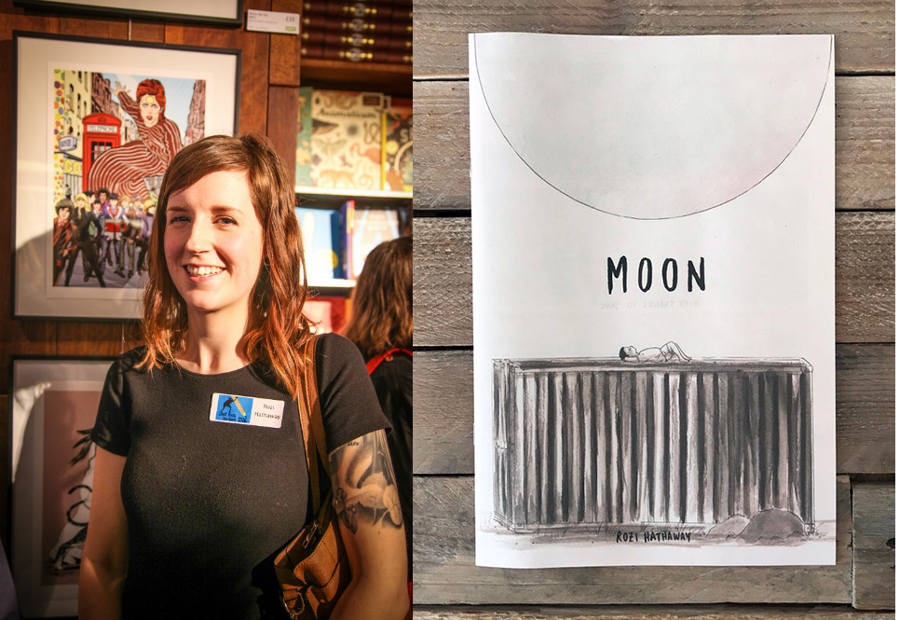
UK-based artist Rozi Hathway used Kickstarter to publish her short comic zine Moon, which she printed as a digital mini newspaper. It was her second successful Kickstarter campaign, she tells us about the sense of community she discovered through the platform, her experience with Patreon and how she used newsprint as her medium to deliver rewards.
I ran a Kickstarter campaign back in 2016 to fundraise the printing costs for my comic Njálla, and I felt comfortable in repeating the process. Supporters on Kickstarter seem to be really interested in seeing new ways of supporting creators to make their work, so trying a different print process seemed like the perfect fit for my second campaign.
People across the world finding my stories has been incredible. I've had people from Brazil, Portugal, Hong Kong, New Zealand and all over who found me on my Njálla Kickstarter and came back to support me again last year with Moon. Kickstarter is full of people keen to support the arts, and it emits such a wonderful, connected feeling.
I'd been wanting to print a comic on newsprint for years but hadn't quite come up with the perfect project for it. Until this one! I'd also gotten to a point where most of my previous comic books had been printed in a similar method and size (digital printing, perfect-bound, A5), so trying something in a new shape and texture felt right.
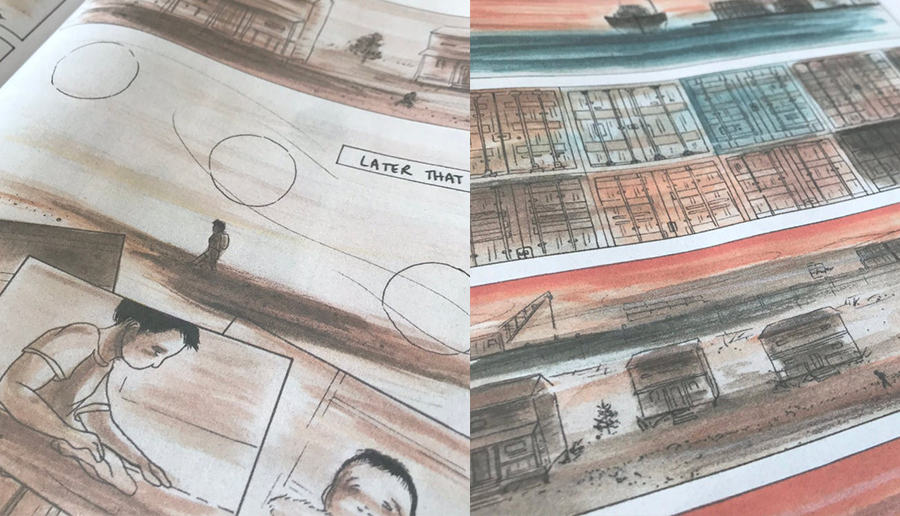
My comics are painterly and delicate, the effect of gouache washes on newsprint turned out better than I could've imagined. I love the look of Moon, and I'm still so thrilled with it nearly a year on.
Since I had some experience with running a campaign, I gave it a solid few weeks of working out how I wanted the finished comic to look and how many pages it would be.Then the preparation process on Kickstarter took me around a month. I like to go over my numbers and all of the details numerous times to make sure it's all as clear as possible for potential supporters. Also, I much prefer drawing crouched over than speaking on camera, so there were a few nights of dedicated camera preparation for my video!
I did have a Patreon for a while, but I recently called quits on it. It never lifted off the ground all that much as my comics process is fairly slow and detailed. Compared to a web-comic artist or someone who generates a lot of content week-by-week, I couldn't keep up with my own expectations, and it was more stress than it was worth. Crowdfunding for a particular project however has been much more successful for me, and suits my style of working and the generation of new stories.
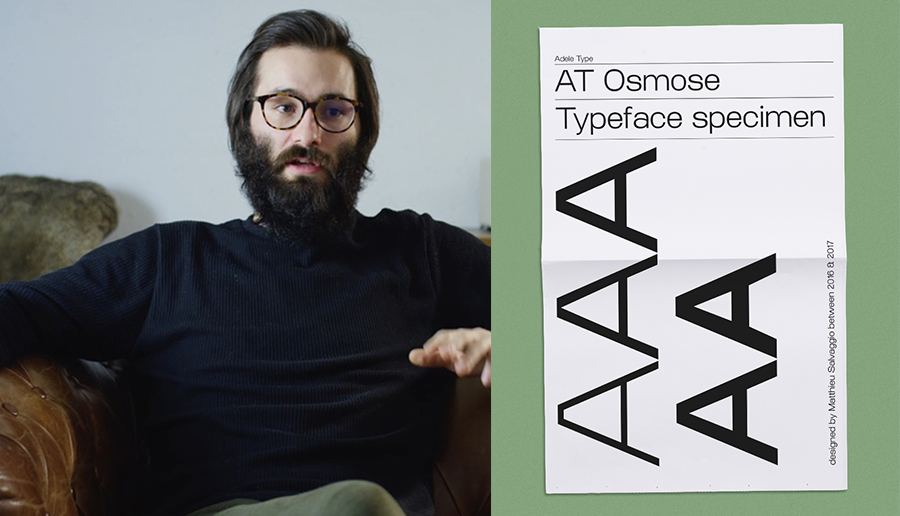
French designer Matthieu Salvaggio released his typeface AT Osmose through Kickstarter in 2017. Backers who pledged €25 or more received a copy of the 16-page type specimen, printed as a digital broadsheet newspaper, as part of their reward. Matthieu exceeded his goal of €1,200 and raised €4,372 by the end of the campaign!
He now runs Blaze Type, an independent typesetting foundry, and has since worked directly with Kickstarter to support other typography projects.
There are so many things you learn along the way when you're launching a crowdfunding campaign. What struck me the most is the deep bond you can create with a community by sharing your experience and your goals through your project. It’s unbelievable how much support you can gather while working on a project like that.
Not really. Almost all the support I had during the campaign came from people directly linked to the design sector, which was the space I wanted to reach with my campaign.
I like to tell the story of how I started working on the Make 100 campaign, as it shows how email campaigns can work.
I was on the bus, checking my emails, and I saw a newsletter from Kickstarter announcing the Make 100 campaign. I had known about Kickstarter for ages and always wanted to design a crowdfunding campaign, and saw this as a great opportunity to finally do it. I wanted to launch my own type design foundry and designing a typeface/newspaper for this purpose through Kickstarter was very exciting to me.
I discovered Newspaper Club as a student and loved the idea of being able to print a newspaper. I wanted to keep working on these kinds of editorial projects after my studies.
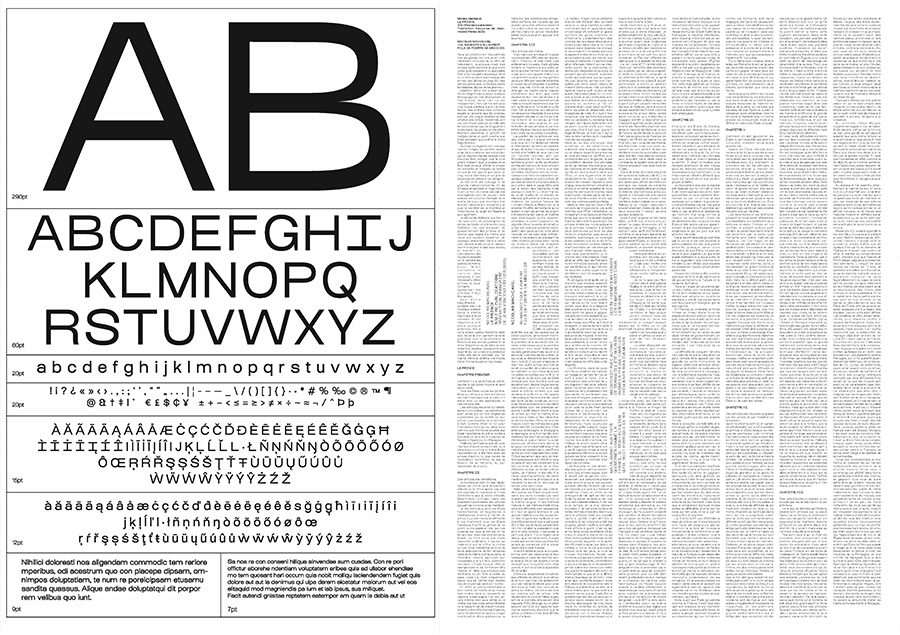
Newspaper layouts are thrilling to work on. I love this medium as you can really get into the design of a layout and enjoy the space.
It was great. It lead me to build a community around Blaze Type before the official website launch. Since then I've had the opportunity to work for Kickstarter directly (under the tutelage of Christoph Nagel) and to meet others awesome collaborators while designing the whole Bold Type campaign.
I’ve released two successful Kickstarter campaign since 2016 — I love the whole concept of it. Now that Blaze Type is expanding its activities towards new design areas (clothing, for example) we might be working on a new campaign in the coming year!
Print your own newspaper with Newspaper Club.
If you’re looking to create a newspaper using Canva, you’re in the right place. At Newspaper Club, we make it simple to design and print...
Weddings are full of stories – how you got engaged, why you chose your venue or the flowers in your bouquet and all the little decisions...
So much thought goes into every part of your wedding, from the venue to the playlist to the colour of the napkins. But there’s only so...